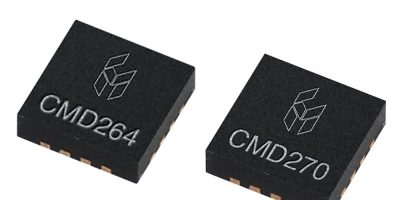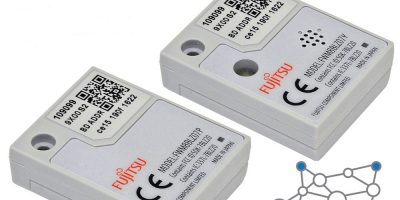Distributor, Mouser Electronics offers Qorvo’s line of gallium nitride (GaN) and gallium arsenide (GaAs) monolithic microwave integrated circuits (MMICs) following the acquisition of Custom MMIC. The range is targeted at aerospace, defence, space and commercial applications.
Custom MMIC is now part of RF and mmWave manufacturer, Qorvo’s Infrastructure and Defence Products (IDP) group. The portfolio now covers the entire RF signal chain, for defence customers, including satellite communications, microwave test equipment, electronic warfare, and advanced phased array radar applications.
Mouser offers Qorvo’s Custom MMIC line of products, including multiple low noise amplifiers, for communications that demand a small form factor and low power consumption. For example, the CMD264P3 6.0 to 18GHz low noise amplifier (LNA) and evaluation board deliver greater than 26dB of gain with a corresponding output 1.0dB compression point of +12dBm. There is also the CMD270P3 4.0 to 8.0GHz LNA, which has a low noise figure of 1.7dB and delivers greater than 16dB of gain. An evaluation board is coming soon. Another LNA is the CMD307P3 (8.0 to 16GHz) with a low noise figure of 2.0dB. An accompanying evaluation board is also available. These LNAs are all 50 Ohm-matched designs, eliminating the need for both external DC blocks and RF port matching, says Mouser.
Other products are the CMD305P3 6.0 to 14GHz driver amplifier, a broadband MMIC offering low current consumption and +20.5 dBm saturated output power. Qorvo’s CMD284P4 DC–22 GHz distributed amplifier is a GaAs MMIC that delivers wideband performance in a leadless 4.0 x 4.0mm package. Mouser also stocks the CMD305P3 evaluation board and CMD284P4 evaluation board.
Mouser claims to stock the world’s widest selection of the latest semiconductors and electronic components for the newest design projects. Mouser Electronics’ website is continually updated and offers advanced search methods to help customers quickly locate inventory. Mouser.com also houses data sheets, supplier-specific reference designs, application notes, technical design information, and engineering tools.
Mouser offers 27 support locations around the world to provide best-in-class customer service and ships globally to over 630.000 customers in more than 223 countries/territories.
Qorvo provides RF products and technology, systems-level expertise and global manufacturing for wireless devices, wired and wireless networks and defence radar and communications.







